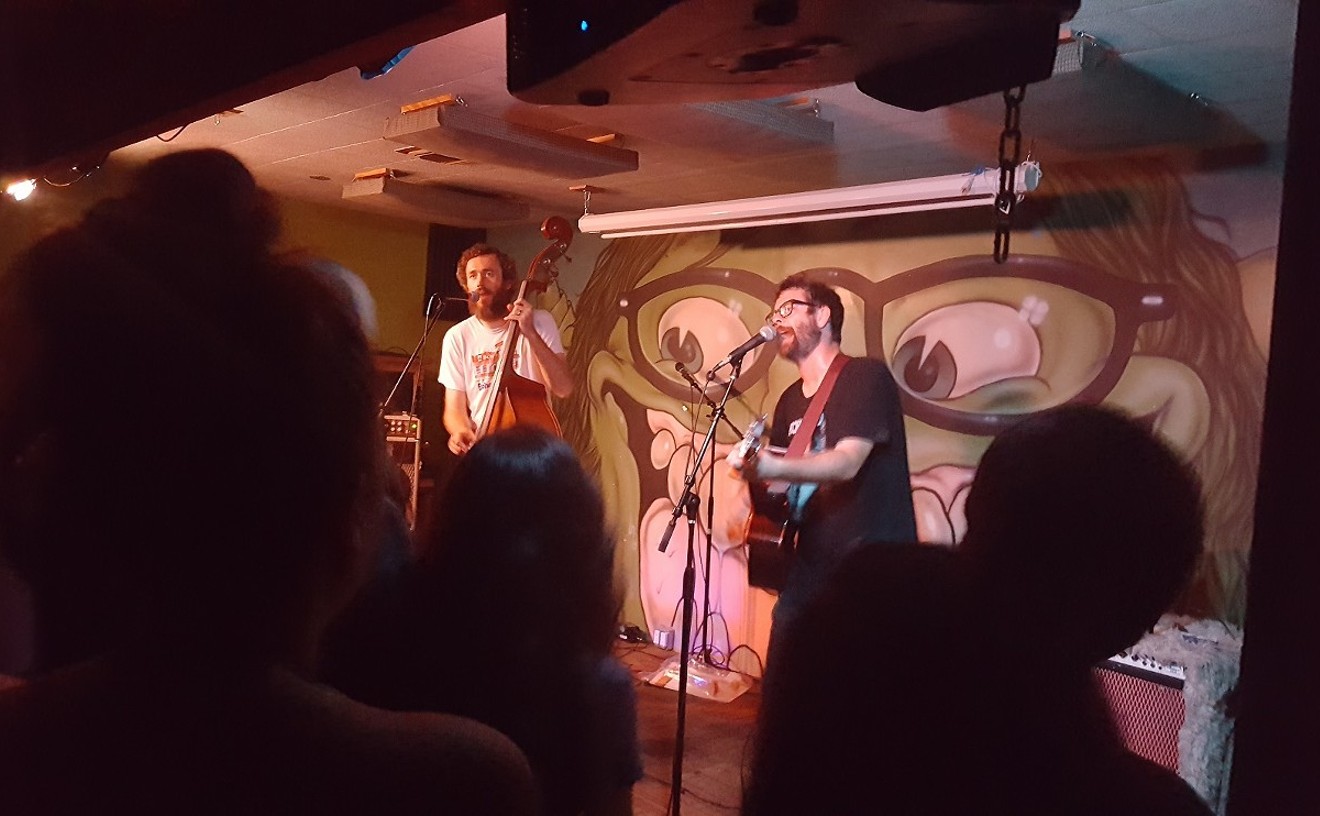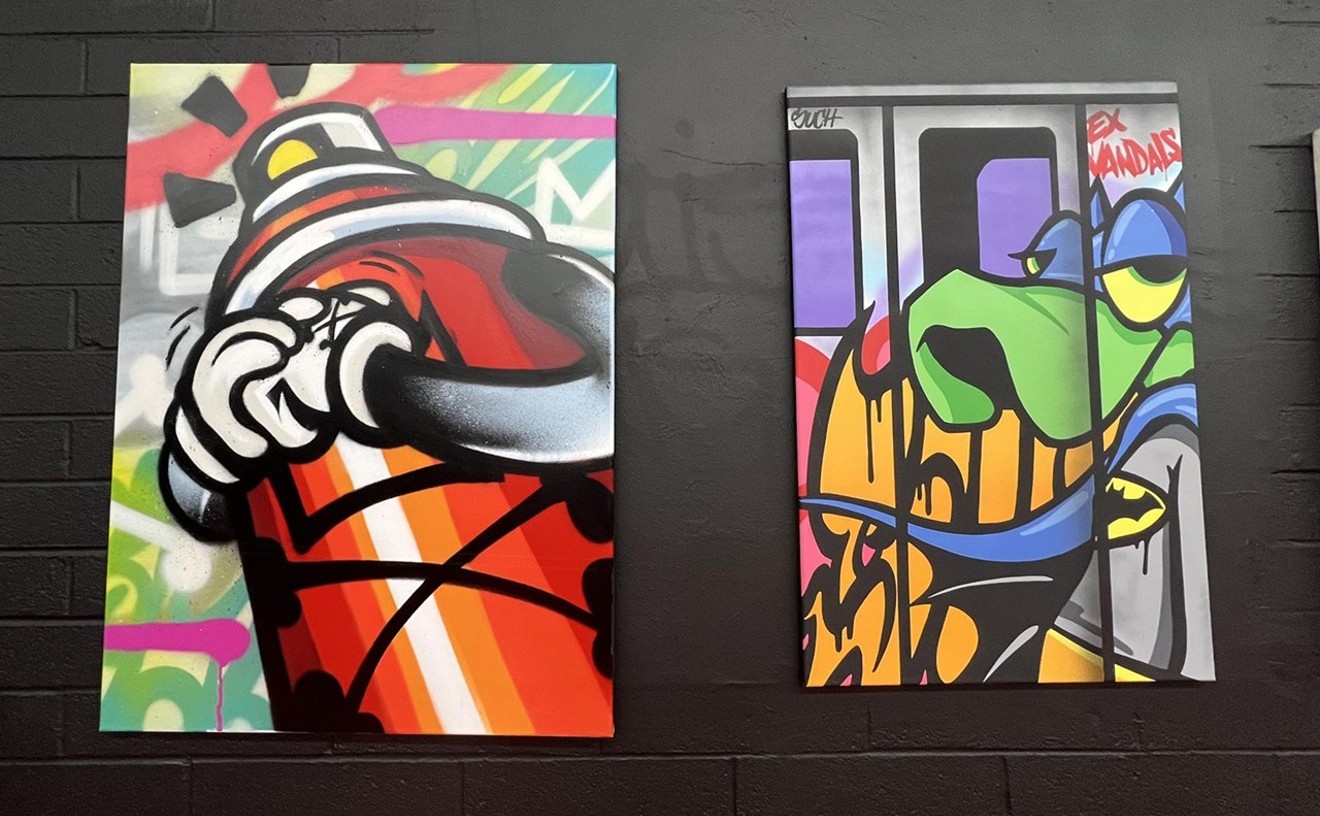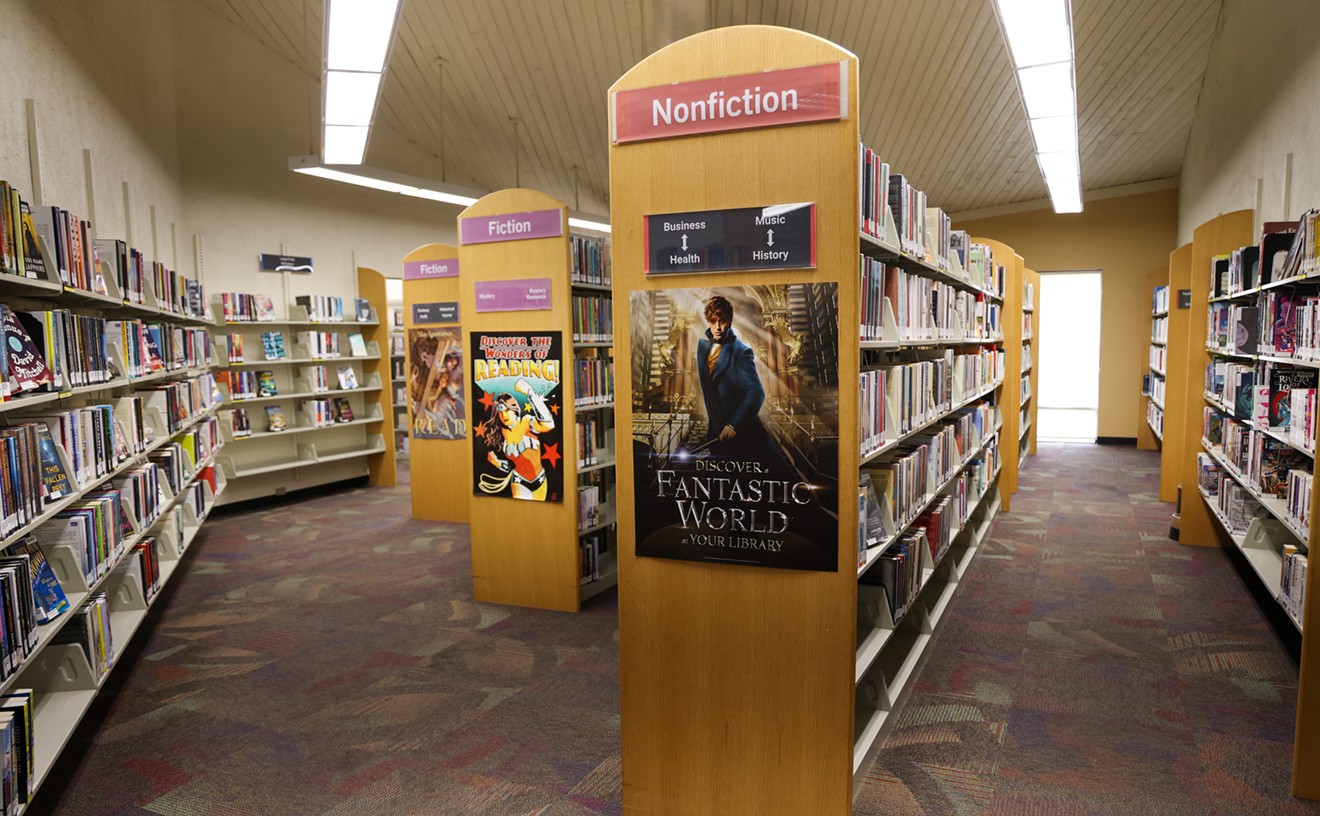One hears ASU Art Museum curator John Spiak's latest show before one sees it. From the landing above the stairwell leading down to the museum's cool, dark, barely lit gallery room where "By myself and with my friends . . ." is exhibited, one can hear the slow, steady rhythm of breathing.
"It was definitely intentional to have this calming sound be so present in the room," Spiak says of the soundtrack to Connie Samaras' Untitled (Ross Ice Shelf, Antarctica), a 4 1/2-minute clip of an Arctic seal noisily coming up for air. "In a video show, I like one or two pieces to encompass the space."
And yet Samaras' piece is the single weak link in an otherwise stunning collection of five films, arranged on three walls of a room bathed in a calming blue glow. While their thematic charge is apparent — all depict animals carrying on in variously entertaining and unnerving ways — an inspection of each reveals the sort of depth that Spiak seems always to be looking for in the art he exhibits.
In Krista Birnbaum's three-minute Constance, a white mouse moves into and out of a fragile, red-and-white teacup. The tinkling sound of the rodent's tiny claws against the porcelain is at once comical and discomfiting. What if the mouse gets stuck in there? one wonders, watching it take a hyperactive bath. Are there mice bathing in my teacups when I'm not looking?
And that's the larger message in — and perhaps the whole point of — "By myself and with my friends . . ." Trained by Disney films and adorable kitten posters to see the cuteness in animals, we've forgotten that these are beasts, not creatures who are concerned about chipping teacups or fouling an expensive rug.
It's a point made dramatically and quite beautifully in the show's centerpiece, a 25-minute film by Corinna Schnitt called Once Upon a Time. This entrancing little disaster movie takes place in a single tidy suburban living room, into which a cat wanders. She's joined by another cat and, then, some kittens and, eventually, a pair of very large dogs. As the camera, mounted on a turntable in the center of the room, spins slowly around, more and more animals arrive: a cockatiel, some ducks, a pair of goats. Off-camera crashes and grunts and squeals punctuate the arrival of piglets, a sheep and, finally, some very large cows. As the animals wreak havoc on the room — eating the plants, drinking from the fishbowl, gnawing the knick-knacks — we're both delighted and horrified.
"So much comes forward as you watch this video," Spiak says. "It becomes so complex that you can't take it all in at one time. It's also just fun to watch the story unfold, at face value, and watch that room get ruined."
"By myself" came about while Spiak was on leave with his newborn son a few years ago. Invited to create a video lounge for the Aqua Art Fair in Miami, he reviewed some 1,600 videos submitted by nearly 500 artists. So much of what Spiak saw pleased him, and he began taking notes on an ASU video exhibition.
"All of my shows are autobiographical," Spiak says, "and this one came out of being a new father. I started to think about the environment and the collapsing economy and what kind of world we're leaving for our kids, and it evolved into this show, which in part is about how we forget that this place was controlled by animals before man took over."
The exhibition is Spiak's last for ASU. He leaves next month for a post as director and chief curator of Grand Central Art Center at California State University in Santa Ana. Spiak has curated at ASU since 1994 and served as its head curator from 1997 on. In addition to more than 50 exhibitions, Spiak launched a still-evolving social practice initiative called Social Studies (its most recent installment was Gregory Sale's "It's not just black and white," a three-month residency exhibition about the criminal justice system) and founded the museum's annual Short Film Festival, which recently celebrated its 15th anniversary.
Spiak tends to curate for his artists, rather than for collectors, and admits that, therefore, curating at a university museum is a good fit. "At a university, I have access to students and young artists, which is exciting. But I also have access to experts on a variety of subjects, no matter what my show is about."
His current show is about — among other things — a very good time. Donna Conlon's Coexistence, which depicts an army of ants hurriedly hauling leaves and miniature flags and peace symbols past the camera, is both deeply political and hilariously funny. And though the humor in Rivane and Sergio Neuenschwander's Sunday — in which a parrot nibbles seeds painted with punctuation marks while the soundtrack of a Portuguese soccer match blares in the background — is more subtle, it's still a captivating five minutes and 17 seconds. Like much of what Spiak has brought to ASU these past 17 years, this menagerie is full of meaning.










